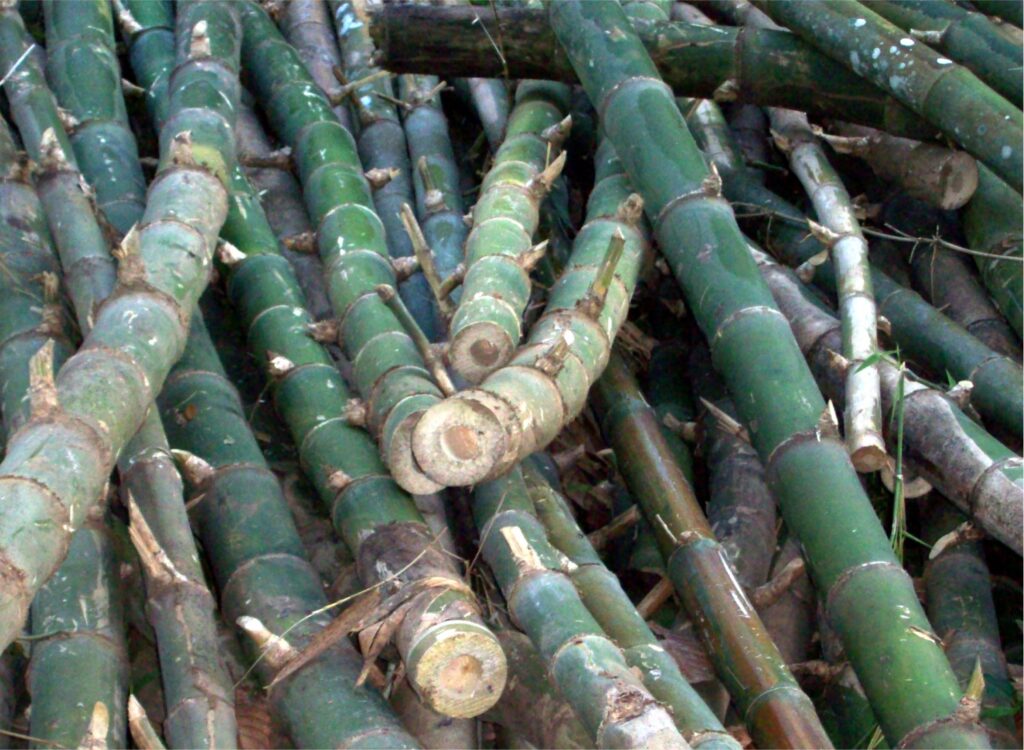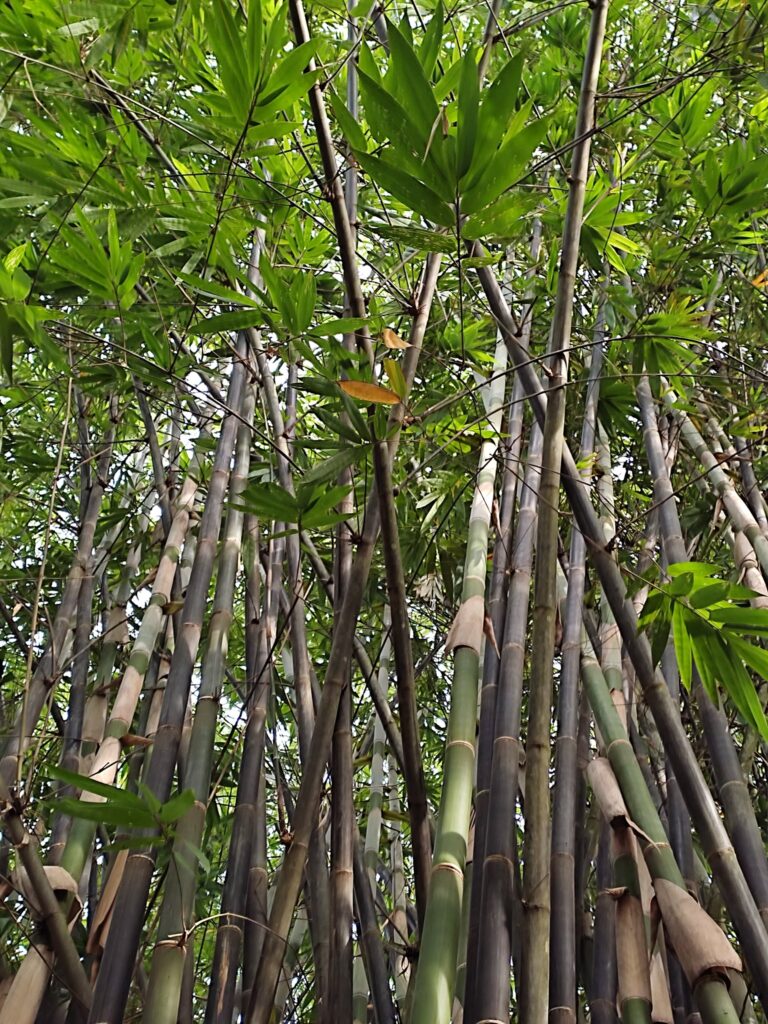Text and Photos by Henrylito D. Tacio
Although bamboo is considered a “poor man’s timber,” it has two valuable reputations when it comes to environmental protection.
For one, bamboo can help mitigate the effects of climate change. For another, bamboo has proven to be an effective barrier against soil erosion.
If it has to heed the report of the Nobel Prize-winning Intergovernmental Panel on Climate Change (IPCC), the world has only 11 years “to beef up its efforts to reduce global temperature before it crosses the threshold leading to climate catastrophe.”
One of the best ways to save the world from the effects of climate change is by planting trees – “at least a trillion of them, and fast,” pointed out Laura Geggel in an article published by Live Science.
“That may sound like a lot of trees, but the Earth has room for their gnarled bows and branches,” Geggel explained. Citing a study that excluded cities and agricultural areas, “researchers found that the planet has nearly 9 million square kilometers to spare for trees.”
A “tree” that may just do the trick is bamboo, which is common in the Philippines. Bamboo, said the International Network for Bamboo and Rattan (INBAR), is “a strategic resource for countries to reduce the effects of climate change.”
Carbon sequestration
“A number of bamboo species are potential tools for carbon sequestration and combating climate change,” said INBAR Director General Hans Friederich on behalf of its 40-member countries.
This is good news as the Department of Environment, and Natural Resources (DENR) is aiming to use bamboo in rehabilitating one million hectares of denuded uplands inside the country’s critical watersheds.
“It’s not just economics that makes bamboo attractive for reforestation – bamboo is also ideal for climate change mitigation,” said Environment Secretary Roy Cimatu during the virtual summit on re-imagining, developing, and sustaining mining communities with bamboo last September.
Cimatu cited some studies which said that bamboo can sequester more than 5.0 tons of carbon dioxide per hectare annually. “That’s quite a big reduction in our carbon dioxide emissions,” he said.
The environment department’s principal research and development arm when it comes to bamboo are the Ecosystems Research and Development Bureau (ERDB). Having done research on bamboo since 1987, it has established a Bambusetum at the Los Baños Experimental Station to conserve and preserve more than 40 different rare and endangered bamboo species.
From 2013 to 2014, ERDB conducted a study assessing the carbon sequestration of four economically important bamboo species: “bolo” (Gigantochloa levis), “buho” (Schizostachyum lumampas), giant bamboo (Dendrocalamus asper), and “kawayan-tinik” (Bambusa blumeana).
Results of the study showed bamboo can store 39.8% to 44.3% of carbon of its total biomass. “The carbon sequestration ability (of these bamboo) is almost comparable to trees (47.66%) which makes it an ideal element for reforestation efforts,” the ERDB said.
Greenhouse effect
During the Climate Change Media Workshop some years back in Davao City, Dr. Rosa T. Perez said that carbon dioxide and certain other gases are always present in the atmosphere. These gases create a warming effect that has some similarity to the warming inside a greenhouse, hence the name “greenhouse effect.”
Dr. Perez explained human activities that emit additional greenhouse gases to the atmosphere increase the amount of heat that gets absorbed before escaping to space, thus enhancing the greenhouse effect and amplifying the warming of the earth.
“Although the Earth’s climate has changed many times throughout its history, the rapid warming seen today cannot be explained by natural processes alone,” pointed out Dr. Perez, who has a Ph.D. in Meteorology from the University of the Philippines.

Bamboo poles 
Bamboo trees
Erosion control
Bamboo can also help control soil erosion, according to a study conducted by a team of researchers from Central Mindanao University (CMU). They came up with the conclusion after assessing the contribution of giant bamboo (scientific name: Dendrocalamus asper) in the Taganibong Watershed in Musuan, Bukidnon. Soil erosion was measured every time it rained through the erosion bar method.
In two years, data showed that giant bamboo cuts soil losses by 75% or 22.66 tons per hectare per year compared with 90.12 tons per hectare per year in open areas. Displaced soil particles are lessened by 80%, while a river near a giant bamboo plantation decreases water discharge by 85%.
The study, which was funded by the Laguna-based Philippine Council for Agriculture, Aquatic and Natural Resources Research and Development (PCAARRD) of the Department of Science and Technology (DOST), also found that sediment yield – a major cause of siltation and flooding in lowland areas – decreased to 2 tons per hectare in a giant bamboo plantation compared to 50 tons per hectare in an open area.
“Bamboo foliage also helps in intercepting raindrops and minimizing the impact to the soil surface,” the study said. “Bamboo litters also shield the soil from the impact of raindrops as decomposed litter improves soil structure and promotes water entry by 40%. This further reduces surface flow, translating to minimize soil erosion and landslides.”
Bamboo is indeed an excellent choice when it comes to erosion control.
“As an alternative to retaining walls and other man-made structures, bamboo can serve as an excellent means of erosion control,” observes the website, bambubatu.com. “Whether you’re dealing with grades and terraces on a sloped property, or the loss of topsoil to river beds and irrigation run-off, the mighty roots of a well-established bamboo plant will provide a remarkable solution to erosion and other related problems.”
According to the website, live bamboo, especially its vigorous root network, works in different ways to consolidate topsoil, stabilize slopes, preserve river beds, prevent run-off, discourage trampling and reduce evaporation.
Economic importance
On its economic importance, bamboo is now one of the most sought-after materials in furniture production and building purposes. In fact, it is now gracing many high-end homes, hotels, and offices around the world.
“The global bamboo market size was valued at $68.8 billion in 2018 and is expected to grow at a compound annual growth rate of 5.0% from 2019 to 2025 to reach $98.30 billion by 2027,” said the website grandviewresearch.com.
“Growing investments focused on infrastructure development, increasing use of sustainable building/construction resources, and rising consumer awareness regarding the uses and benefits of bamboo are expected to drive the market growth over the forecast period,” the website added.
Bamboos, along with rattan, provide several environmental, economic, and social benefits to the community where it is grown.
“Bamboo is a sustainable resource that can grow under a range of climatic conditions, but preferably a tropical climate,” the website said. “It provides approximately 35% more oxygen and absorbs 40% more carbon dioxide as compared to trees, which results in a substantial improvement in the air quality. Further, cultivation of bamboo offers carbon fixation, controls soil erosion, and purifies the environment.”
In the world market, bamboo is more preferred over timber as the former is easier to harvest, transport and is relatively affordable.
Aside from being resilient, bamboo grows fast. Some species of bamboo are clocked at growing over 90 centimeters in height in a day. That’s over 3.8 centimeters in one hour! No other plant on earth can do that.
“Bamboo can reach full maturity in one to 5 years (depending on species),” states the bamboobotanicals.ca. “Hardwood trees can take 30 to 40 years. It is the only woody plant that can keep up with the rate of human consumption and deforestation.”
The bamboo business, however, is labor-intensive, more so during the first two years of operation. Studies have shown that labor alone eats around 90 percent of the total production cost. But the beauty of bamboo growing lies in passing the first two critical growing years.
“If the bamboo survives, you are assured of money for the next 30 to 50 years,” says a bamboo grower. Another good thing: the price of bamboo does not suffer from severe fluctuations, unlike pork and chicken. In fact, they are priced depending on the diameter, volume and distance traveled.
Renewable resource
One good thing about bamboo is that it is a renewable resource. When it is harvested, bamboo will continue to grow new shoots from its root system. There is no additional planting or cultivation. Bamboo requires no chemicals, pesticides, or fertilizer to grow and thrive. Its very own fallen leaves provide the necessary nutrients that get recycled back into the soil.
Meanwhile, the environment department has issued Department Administrative Order No. 2021-26 (DAO 2021-26), which lays down the rules and regulations governing the establishment, harvesting and transport of bamboo in the country.
Under the administrative order, a one-time registration fee for a certificate of bamboo plantation registration, which has no expiration until the bamboo stand is declared unproductive, is all needed for a person who wants to plant bamboo in his land.
DAO 2021-26 also stated that registration of tenured forest landholders and backyard farms is exempted “if these are for personal consumption and transported within the municipality.”
If backyard farms want to produce bamboo for commercial production, these may be registered as individuals “provided that they have steady and sustainable supply,” or they may opt to form a cooperative/association instead.
The environment department will also help bamboo entrepreneurs in accessing technology transfer arrangements provided by the Department of Science and Technology (DOST) and concerned government units.
In addition, the administrative order also provides incentives to bamboo plantation owners for plantation development and bamboo processing enterprises and outlines guidance on capacity-building, research and development, technology transfer, financial subsidy, and other support activities.
“Bamboo is not a weed, it’s a flowering plant. Bamboo is a magnificent plant,” commented Steve Lacy. Thomas Alva Edison supposedly used a carbonized bamboo filament in his experiments in developing the light bulb. Alexander Graham Bell also used bamboo for his first phonograph needle. “You can eat, wear, and build with bamboo,” said Michael Block.

